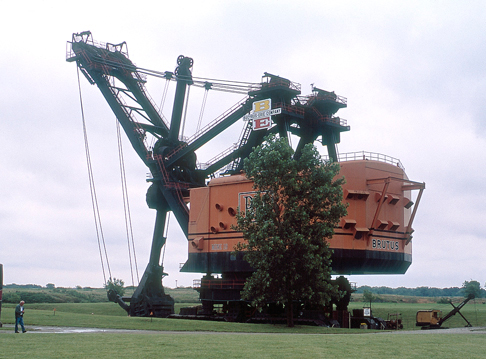Coal Mining

Coal was likely mined from a hillside near Fort Leavenworth in northeastern Kansas as early as 1827, the year the fort was established. By the late 1850s, Missourians were mining coal for use by blacksmiths near what is now Weir, in southeastern Kansas. Just before and after the Civil War, coal production became central to the expansion of railroads because it burned hotter and was less bulky than wood. To meet the demands of the railroads, strip mines were opened during the 1870s in Bourbon, Cherokee, and Crawford counties.
Coal was also mined in Osage County in east-central Kansas from 1885 to 1969. In 1889, Osage County had 118 coal mines that employed more than 2,200 people and produced almost 400,000 tons of coal. For many years, this was the main source of fuel for the Santa Fe railroad, whose main line passes through Osage County.
In 1874, the first mineshaft in Cherokee County was dug and coal was excavated using the room-and-pillar system in which substantial pillars of coal are left standing to support the overlying rock. Underground mining was dominant there for several decades, and the Weir-Pittsburg coal bed became the most extensively mined coal bed in Kansas history.
Strip mining became the preferred method in southeastern Kansas in the 1930s, although underground mining continued there until 1960 and in Osage County until 1964. During strip mining operations, overlying soil and rock, called overburden, is stripped away using power shovels to expose coal beds too thin to be mined underground. In southeastern Kansas, ditches were dug as much as 100 feet deep to reach the coal. One of the world's largest power shovels, Big Brutus, was operated 24/7 in Cherokee County from 1963 to 1974. It is now the centerpiece of a museum featuring the southeast Kansas mining industry.

Strip mining creates deep ditches and high ridges. Before widespread land reclamation was required in 1969, disturbed land in Kansas was abandoned when mining operations stopped. Trees and brush took over the ridges, and the trenches filled with water.
In 1969, the Kansas Legislature passed regulations requiring coal companies to reclaim mined land and make it productive again. More stringent federal regulations followed. On land strip mined after 1969, mining companies had to smooth ditches, bury mine waste that polluted water, replace topsoil, and plant grass or crops. Thousands of acres that were strip mined before regulations were enacted are now part of the Mined Land Wildlife Area that encompasses 1,000 strip mine lakes and is maintained by the Kansas Department of Wildlife and Parks.
In February 2016, the last mining company in Kansas, at least temporarily, ceased operation.